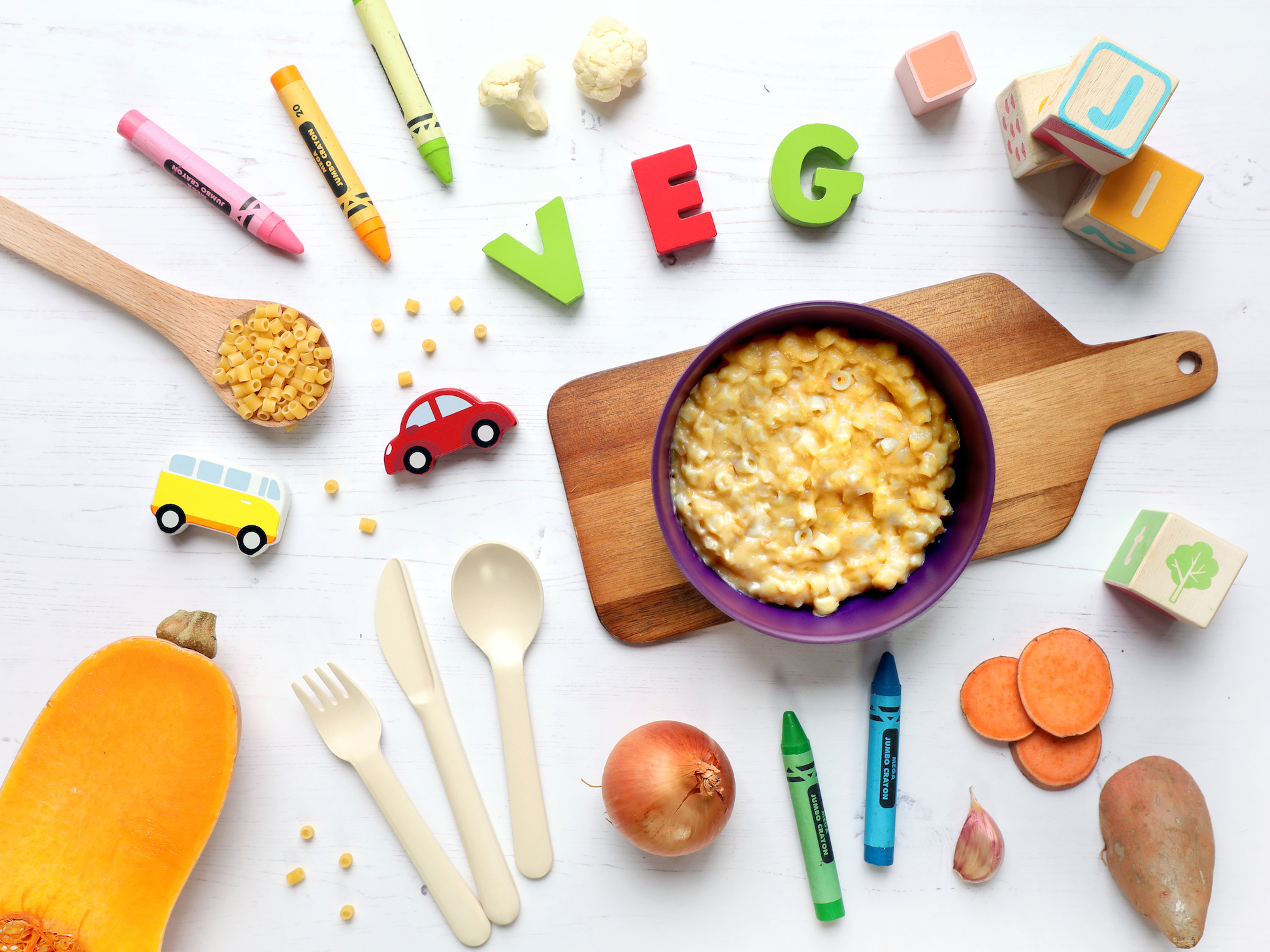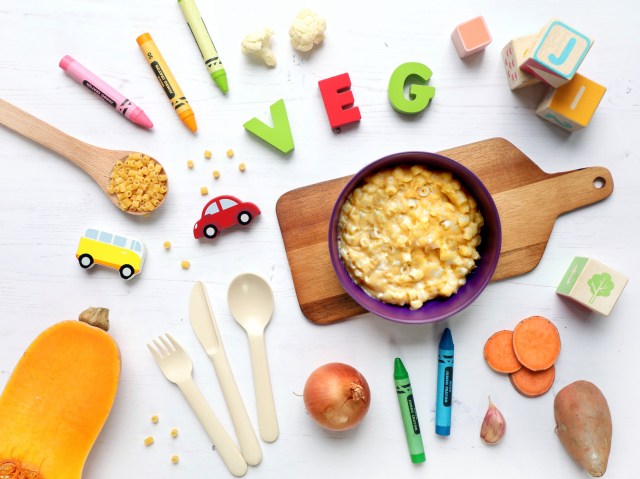
Feeding toddlers is not for the faint of heart. As parents, most of us have experienced the anxiety and frustration that often comes at meal time. Whether it’s a busy schedule or a toddler who refuses to eat, meals can be downright stressful. Yet, at the same time, we feel pressure to provide our kids with the important nutrients they need to grow and thrive. This means a diet that includes a wide variety of fruits, vegetables, whole grains, lean proteins, and dairy foods.
The biggest struggle often comes with two v-words: vegetables and variety. In fact, eight out of ten toddlers don’t eat enough vegetables. And the vegetables our toddlers eat typically lack variety. How many of us regularly throw a few raw baby carrots on our child’s plate because we know they’ll be eaten? In our busy world, it’s easy to fall into a feeding rut.
So, how do we support variety and vegetable consumption during the important toddler years? The key is having a few different tricks up our sleeves because toddlers are notorious for changing preferences overnight. One day they love broccoli, the next day they hate it. Here are some tried-and-true techniques designed to make veggie variety simple and give parents some peace of mind during those challenging phases.
Make Old Favorites in New Ways
One great way to increase the variety of vegetables in your family’s diet is by introducing favorite veggies in new ways. For example, if your child loves mashed potatoes, give mashed squash a try. If that goes well, try squash ravioli and then finally, roasted squash. Similarly, when introducing new vegetables, prepare them in a variety of textures—for example, roasted broccoli, cream of broccoli soup, broccoli & cheese scrambled eggs. This introduces the flavors in several ways and gives children a chance to develop their palettes and acceptance of the new taste.
Make Veggies Easy
Vegetables can be a logistical challenge at times—they’re perishable and require washing, chopping, and cooking. Make them a little easier by finding some shortcuts that work for your family. For example, wash and chop some vegetables on Sunday to keep on-hand for snacks throughout the week. Keep frozen vegetables in your freezer for quick use. Identify some healthy, veggie-rich short-cuts for busy nights. One great example is Little Dish. These fresh, all-natural, refrigerated heat-and-serve toddler meals offer a full serving of veggies in each bowl. Little Dish is now available locally through Fresh Direct.
When All Else Fails, Hide Those Veggies
During those difficult times when your child is downright refusing new foods or eating only a few different foods—don’t stress! This is a phase and will pass. That said, sneaking in extra veggies during times like this will often give mom and dad some peace of mind. Some of my family’s favorite ideas include:
- Adding canned pureed pumpkin to our favorite chicken noodle soup recipe. It blends right in and adds a great kick of nutrients and fiber.
- Finely dice mushrooms and add them to chili or tacos. Their savory “umami” flavor is often completely masked by the spices.
- Add shredded zucchini into your meatloaf or meatball recipes! This trick also keeps the meat tender and moist because zucchini has a high water content.
Finally, remember it takes time for children to learn to love new foods. Just keep offering them and eventually, they’ll likely stop playing with their veggies and start eating them!
